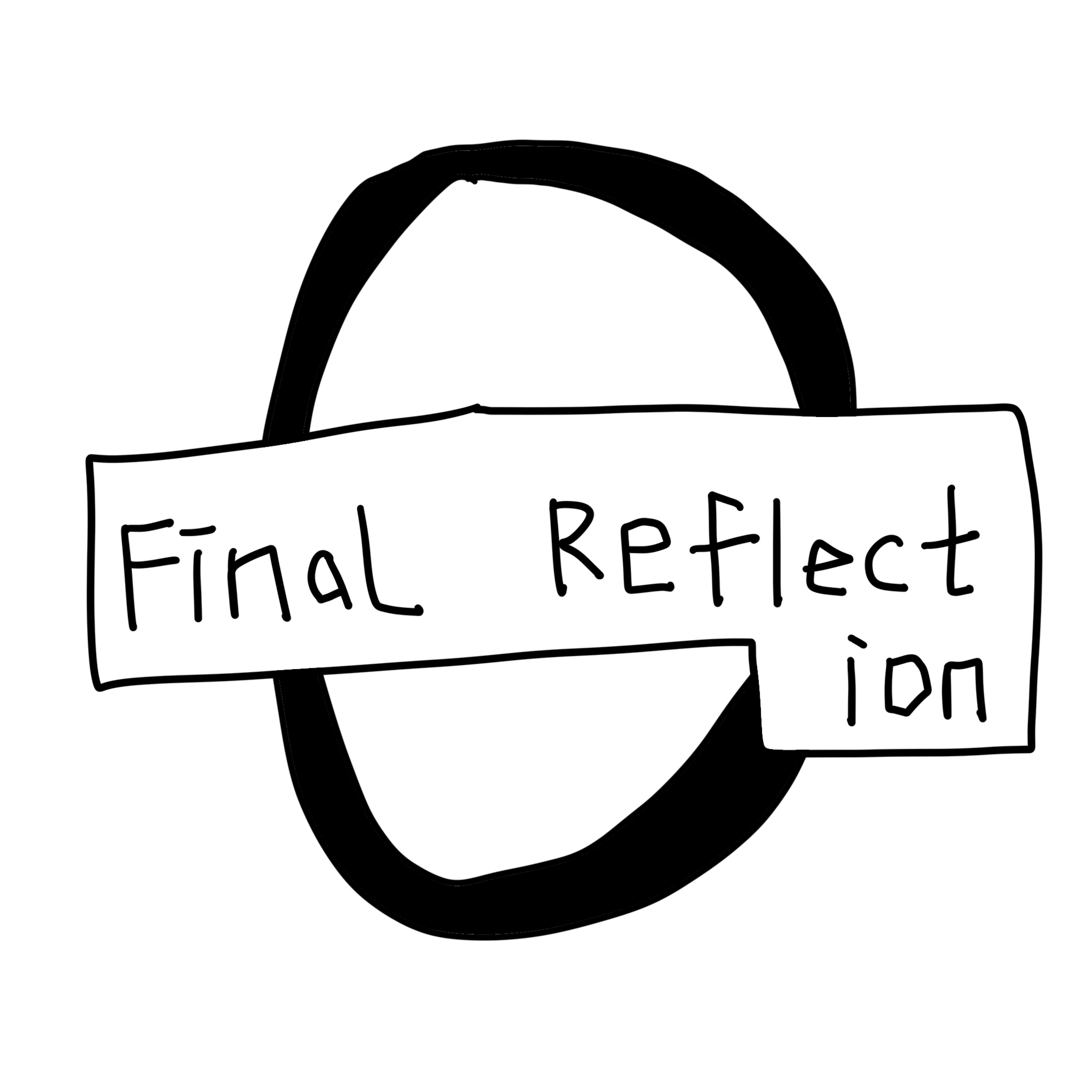Blog 10
Reflections on first semester projects and blogs
Introduce
2021 is the most challenging year of my life. I started my postgraduate life in February this year. Since I switched from visual communication design to communication design, I was a little bit unable to keep up with the teacher’s pace in the first course. In the beginning, besides listening to the teacher’s explanation of knowledge in class, I also read related professional knowledge online after class, so as to digest the various theories given by the teacher. In the following report, I will show what I have learned and my reflection on myself.
Describe

In the first semester, our majors are online courses. I only did 4 projects in total: personal maps, user psychological surveys of Chinese students in online classes, a weather app for cyclists, and app production for conscious consumption. Every project is a huge challenge for me. But fortunately, the teacher arranged the four courses very cleverly and led me to understand the investigation and design steps of UXD little by little, which enabled me to learn the real design experience:Complete user experience design process. First learn the design methodology, and then determine the product requirements. To enter the inspiration and creative stage, you still need a sketchbook, preliminary research and 5C user model, and finally enter the second stage: low-fidelity prototype drawing, user testing, design specification, high-fidelity design and emotional design. During this period, I also bought a book recommended by the teacher called “Design is storytelling”. This book is written by Ellen Lupton. This is a heuristic design reading, and the illustrations in the book are just right. It provides introductions, examples and high-quality illustrations for each concept term, so that I can understand the related concepts. It is very helpful for me who is new to interaction design. The end of each section is accompanied by recommendations for extended reading. If I want to go deeper or learn more, I need to learn more. Under the recommendation of my tutor, I read an article on interaction design every week, sometimes it is also an instructional video, and sometimes it is a section of the book. In these 10 weeks, I have made 9 related post-reading blogs, which are probably similar to Coexistence of craft and way of thinking in the future of design, Empathy in UX design, and What is the affordance etc. These have supplemented my basic knowledge of interaction design, allowing me, who have no design experience, to slowly explore the design doorway and expand my knowledge base. The above-mentioned related content can be read on my personal website.
Interpret

In this semester, all projects were completed in groups, and the final presentation results were completed by everyone independently. Before the start of the project, members of each group will discuss the project plan with the teacher, and what difficulties need to be provided for help. The teacher will give suggestions for our problems, and then implement it. For example, Project 4, as shown in the figure above, under the teacher’s suggestion, I used the double diamond model and the thinking mode of engineer design method to polish my ideas repeatedly.

This gave me a new insight into design thinking. These classic design methodologies have been tested and iterated for many years and have been widely used in the fields of interaction design, service design and user experience design. Although the process of learning these theoretical knowledge is boring, it has provided me with Reliability and validity. The core essence of the double diamond model and its improved version is a way of thinking about the problems and solutions in the design composition. It is also a way of thinking that is highly respected in the current design circle, that is, thinking about the right or wrong of the problem itself and whether the solution ultimately returns to the original origin is the focus of the whole design process (Dan, 2016). In his article on the improved version of the double diamond model, Dan Nessler compared the improved version and the original version to the relationship between actual cooking and recipes. Following the recipe does not necessarily produce dishes that meet personal tastes, but it provides us with a universal process. In actual cooking, we adjust some details according to personal tastes to adapt to the different needs of each person (Dan, 2016). This metaphor is a very appropriate explanation of theoretical knowledge and how it functions in actual work. This means that when we learn these theoretical knowledge, the essence is to learn the thinking behind the words. I learned from an article by Donald in the blog task I have seen,don’t rush to solve the problem, but research repeatedly to find the root cause and need, not the superficial phenomenon. After the solution is obtained, the solution is evidenced and is the result of repeated observations and experiments.“Human-centered design of the future puts people first in addressing the major problems of society.”(Donald,2018)
So during the inspiration idea of Project 4, although I was stuck for a long time and seeing the progress of my classmates slowly surpassing me, I firmly believe that good products need to be polished many times. We need to systematically understand the environment, discover user needs, and Design touch points that provide a better service experience.
Evaluate

Our course projects need to be continuously polished by crit. Based on the suggestions given by classmates and teachers, plus their own thinking, a work is repeatedly updated and iterated. Therefore, in the stage of inspiration and creativity, I learned six thinking hats. One way of thinking. Six thinking hats is a thinking training model developed by British scholar Dr. Edward De Bono in 1980. It uses six hats of different colors to express different thinking. This is a very efficient way of thinking. It helps us to repeatedly update iterative products and ensure that we give sufficient attention and full consideration to different aspects of the problem in turn. (Edward, 1981) It also made chaotic thinking clearer, turned meaningless disputes in groups into brainstorming creations, and made my work creative. Because the essential purpose of interaction design is not the product or the system itself, but the impact on humans and the participation and use in the system. This model can help us develop complete works in future designs, make the product more human-centered design, and also make the product practical and effective.
All in all, only by mastering the process of how to weave thinking can we say that we have truly mastered the application methods of the six thinking hats, otherwise people often feel that this tool is not practical. However, it is difficult to achieve the desired effect in the preparation of the hat sequence only by reading.
Plan
In terms of criticality and creativity, I need to work harder to explore and practice. In the future life, I will use a certain way of thinking learned in class to think over and over again before designing a good work. I need to keep learning all the time and study more knowledge about emotional experience. In the future, I will engage in a collision of thinking before the project starts. Although the epidemic is a distance between my classmates and I, my partners and I will always use the Internet to communicate and criticize each other. Latitude, and long-term mutual training, so that their thinking has more depth and breadth, and the issues considered will be more comprehensive and more creative.
But the most important thing is to make effective interactive products. That is, the design that successfully conveys interactive information, all interactive behaviors of information transmission, concept transmission, and emotional transmission that can be achieved through senses are within the scope of “communication”. Good interaction represents tacit communication, and this kind of communication through design is often not easy to detect. Through preliminary research and repeated iterative updates of ideas and materials, we have mastered some user needs, but are these real user goals? Sometimes what we find may only be superficial problems, and building user models can help us to put aside the phenomenon and look at the essence, to explore the lowest level of user needs. In future design, in order to have a deeper understanding of users, I need to learn emotional design. Through emotional drive and guidance, users can complete product tasks and perform expected operations. At the same time, it can also eliminate the user’s negative emotions when the product is in an abnormal state, such as waiting for the loading process and page access failure. Therefore, we need to listen more to the emotional demands of users in the process of product design, so that we can design products that truly move people’s hearts.
Reference
Lupton, E., n.d. Design is storytelling.
image 3: Medium. 2021. How to apply a design thinking, HCD, UX or any creative process from scratch. [online] Available at: <https://medium.com/digital-experience-design/how-to-apply-a-design-thinking-hcd-ux-or-any-creative-process-from-scratch-b8786efbf812> [Accessed 15 May 2021].
Nessler, D., 2016. How to apply a design thinking, HCD, UX or any creative process from scratch. [Blog] Available at: <https://medium.com/@dan.nessler> [Accessed 15 May 2021].
Norman, D., 2018. The Future of Design: When you come to a fork in the road, take it. [online] jnd.org. Available at: <https://jnd.org/the_future_of_design_when_you_come_to_a_fork_in_the_road_take_it/> [Accessed 15 May 2021].
De Bono, E., 1981. Edward de Bono’s atlas of management thinking. London: Temple Smith.



